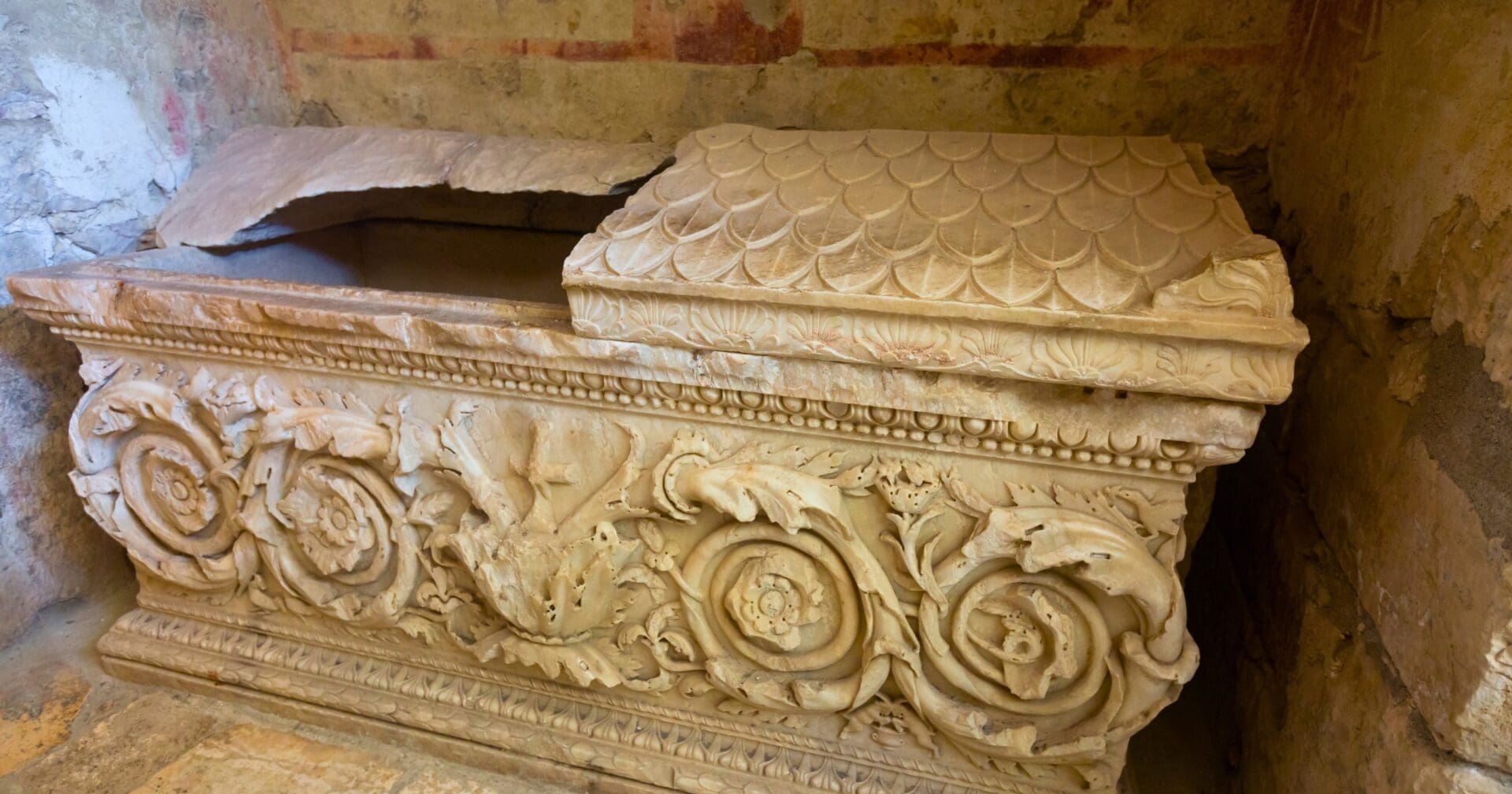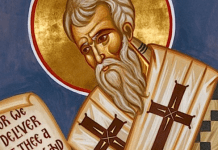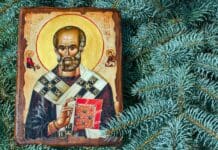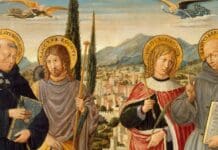Children everywhere know the historic fourth century saint as the man who comes down their chimney every Christmas night to bring them presents and gifts. Saint Nicholas’ modern day moniker actually came from the Dutch folk figure, Sinterklaas, which eventually became Santa Claus. The real Saint Nicholas is renowned among the Faithful, and is known for his legendary habit of secret gift giving. After his death, many have claimed to have relics of Saint Nicholas’ bones. Where is he really buried?
Saint Nicholas, also known as Saint Nikolaos of Myra, was born in Asia Minor the year 270 in a port city on the mediterranean, Patara, but quickly after moved to Myra. He was the son of wealthy Catholic parents who tragically died during an epidemic. His uncle, the Bishop of Myra at the time, took him in and raised him. Religious from a very young age, Saint Nicholas astutely observed canonical fasting. He was tonsured and eventually ordained a priest by his uncle. History remembers him as a legendary gift giver, and in his most famous story, he helped a poor man with three daughters unable to pay dowry. Unable to afford a proper dowry, the poor man’s daughters would surely remain unmarried and have to become prostitutes in absence of any other employment. Not wanting to draw attention to himself, Saint Nicholas went to the poor man’s house one night and threw three purses filled with gold coins through the window, one for each daughter.
After the death of Saint Nicholas in December of 343, his body was buried in his birth city of Myra in modern day Turkey and was a popular pilgrimage spot. For over 600 years, he remained interred there until sailors from Bari, Italy began to worry because Myra was going to get overtaken by Seljuk Turks. Fearing the capture of Saint Nicholas’ bones by Muslim conquest, the majority of his bones were taken by the sailors back to Bari in the spring of 1087. The few relics left behind are still on display in Myra.
His bones have since been housed in the Basilica di San Nicola in a subterranean tomb, the church being a popular destination for Faithful around the globe. His bones are said to exude myrrh, and every year on his feast day (December 6th), clergy lower a flask into the tomb and collect some of the liquid. It is quite possible that the liquid is simply condensation from being underground in a seaside port city, however.
In May of 2017, his bones were moved for the first time in 1000 years to go on loan for a short time to the Cathedral of Christ the Savior in Moscow and then the Saint Petersburg Monastery. After thousands visited to see the rare relics of Saint Nicholas, the bones were flown back to Bari, Italy in a special reliquary to once again be interred underground.
Photo credit: BearFotos / Shutterstock.com


















Saint Nicholas of Bari, patron saint of Sicily, pray for us.
All holy men and women, martyrs, saints, angels, pray for us.
For conversion of sinners and redemption of suffering souls.
Holy Family of Nazareth, restore matrimony and family life.
Transform all of mankind’s iniquity into integrity. Amen.
Ecce Crucem Domini!
Fugite partes adversae!
Vicit Leo de tribu Juda,
Radix David! Alleluia!
Saint Anthony of Padua, pray for us. For Italy.
Saint Teresa of Avila, pray for us. For Rome.
Blood of Christ Crucified, cleanse the Vatican.
For the sake of Your Son, have mercy Lord.
Help us all to be obedient and generous like Saint Nicholas.